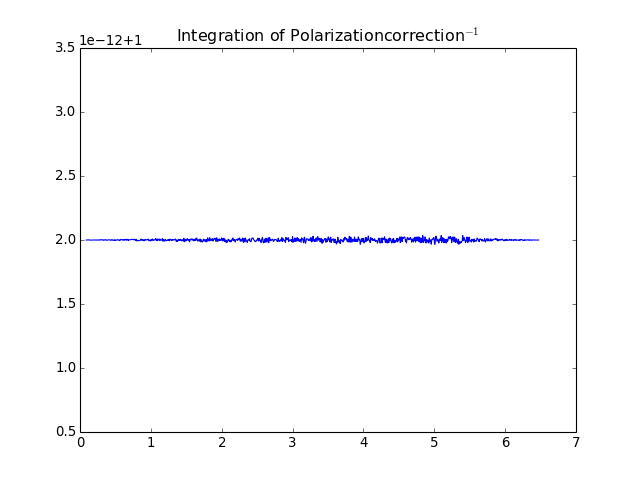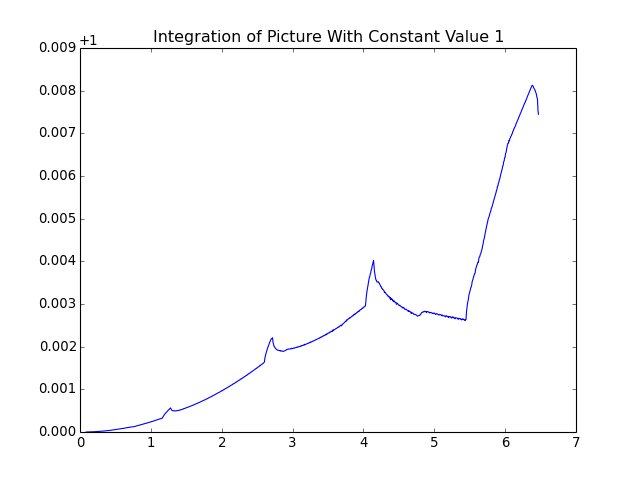Polarization Correction¶
The polarization correction is expected to be small at small angles, but it is deemed important.
where \(\phi\) is the azimuthal angle on the detector surface (defined here clockwise, 0 at 12 o’clock) \(2\theta\) the scattering angle, and \(P\) the fraction of incident radiation polarized in the horizontal plane (azimuthal angle of \(90^{\circ}\)) The polarization correction is configured by two parameters in PolarizationCorrection. Its factors are included in the integration matrix (operator).
This input:
{
"Geometry": {
"Tilt": {
"TiltAngleDeg": -0.56,
"TiltRotDeg": 73.569
},
"DedectorDistanceMM": 1031.657,
"BeamCenter": [
808.37,
387.772
],
"Imagesize": [
1043,
981
],
"PixelSizeMicroM": [
172.0,
172.0
]
},
"Directory": [
"."
],
"PolarizationCorrection": {
"Angle": 0,
"Fraction": 1
},
"Masks": [
{
"PixelPerRadialElement": 1,
"MaskFile": "./data/AAA_integ.msk",
"Oversampling": 2,
"qStart": 0.0,
"qStop": 5.0
}
],
"Wavelength": 1.54
}
Gives:
(Source code, png, hires.png, pdf)

If the correction factors are all correctly in the algorithm, the integration of an image containing \(1/I_{corr}\) should give constant 1.0.
(Source code, png, hires.png, pdf)

Just for checking: integrating a picture with only ones gives something different:
(Source code, png, hires.png, pdf)

This are the wiggles that come from the polarization correction pattern